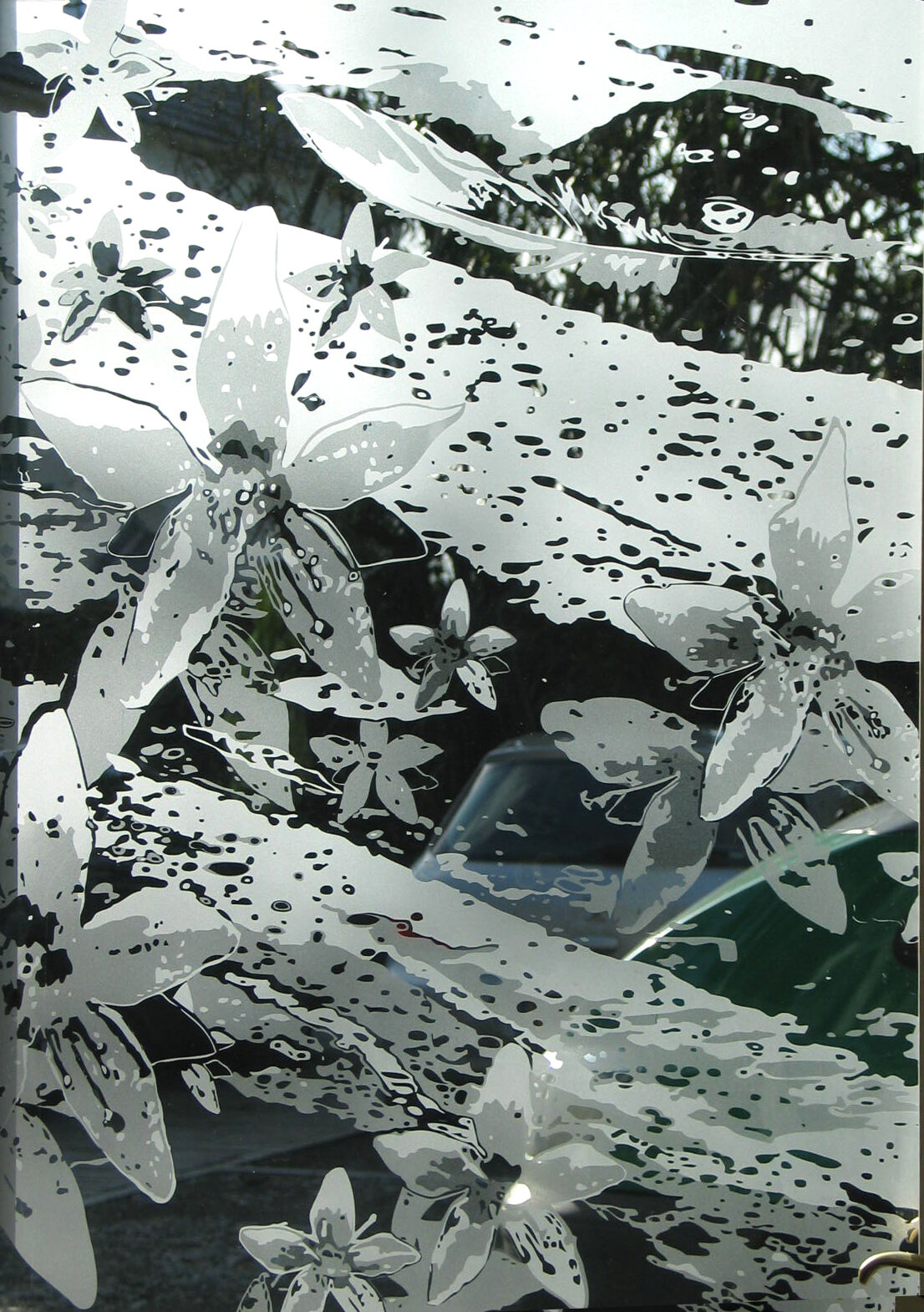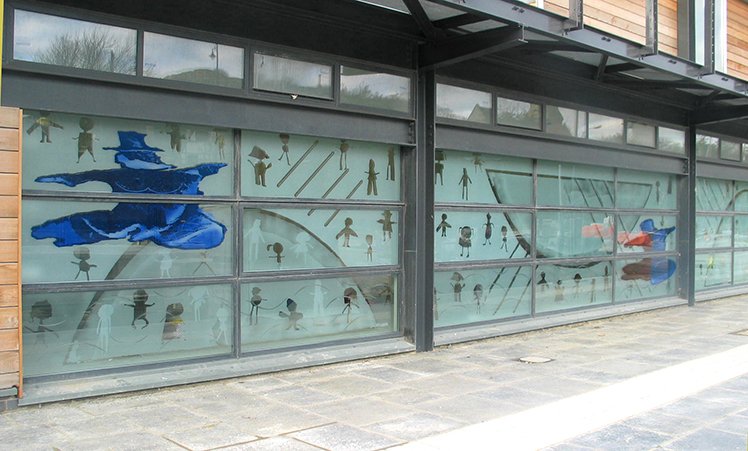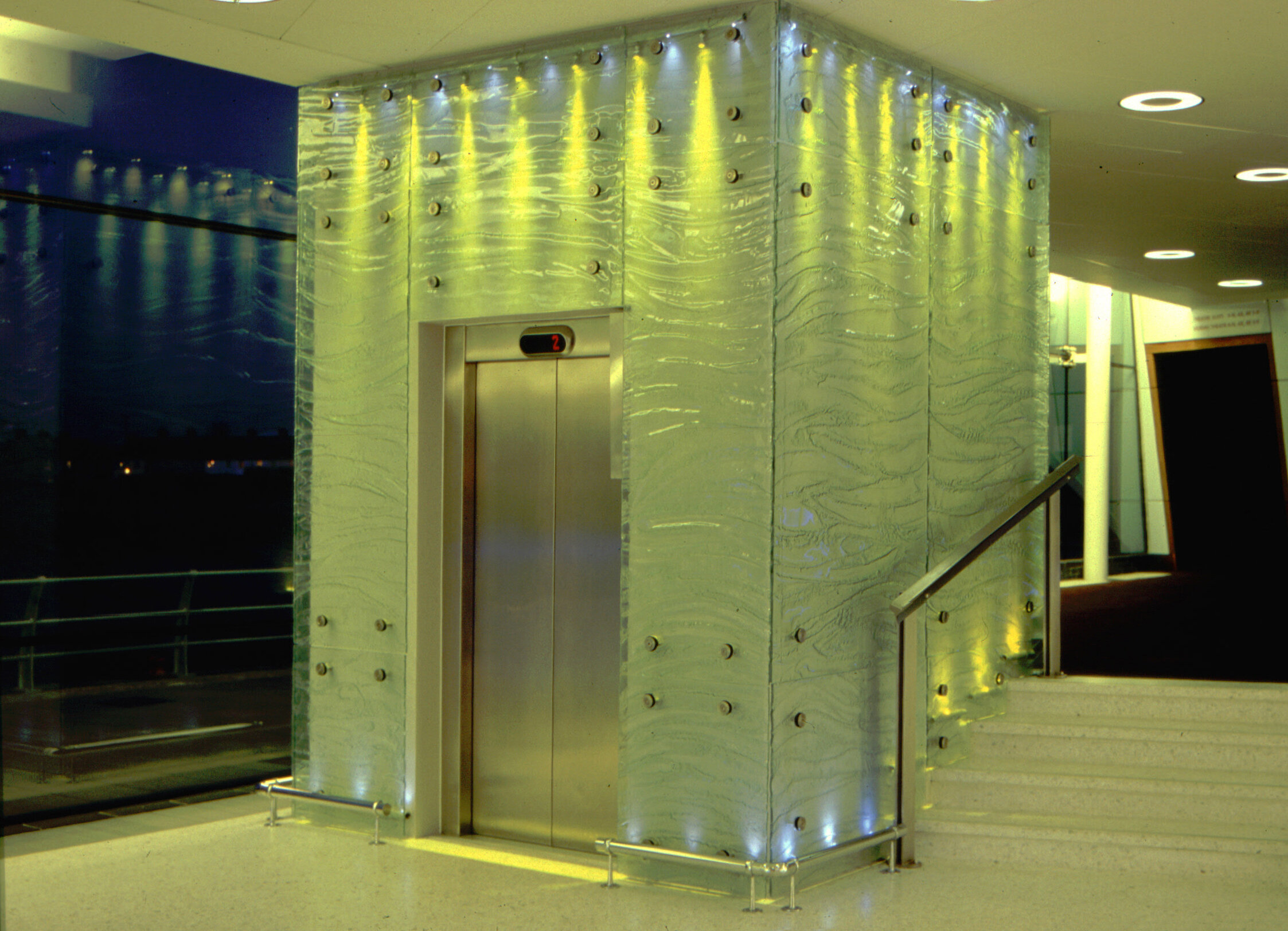TREATMENT EXAMPLES & TECHNIQUES
More than any other art form, stained glass exploits the interaction between natural light and human visual perception. Essentially a dynamic daylight art, coloured glass in architecture is animated through its relationship with light, moderated according to the time of day, the seasons and the weather. The transformation of sand (silicon oxide), soda (sodium oxide) & lime (calcium oxide), melted at high temperatures into sheets of beautiful coloured glass, provides an artist with a palette to begin to paint with light. The primary techniques of decorating glass in architecture are described below.
Traditional hand-blown (‘antique’) glass
A traditional stained glass window was, and still is, made by painting onto, or etching, pieces of hand-blown ‘antique’ glass. These are held together with strips of lead that are then soldered and cemented together. (The term ‘antique’ refers to the traditional manufacturing process, and not to the age of the glass).
‘Antique’ glass is coloured during its manufacture. Some ‘antique’ glass consists of a single colour only, whilst “flashed” glass is made up of a base colour with a thin layer of a second colour laid (or “flashed”) on top. By removing some of the “flashed” surface, to reveal the base colour beneath, an artist is able to incorporate two colours in a single sheet.
The maximum size of a single sheet of hand-blown glass is about 750mm square, which constrains its use over large areas. However, modern adhesives now allow ‘antique’ glass to be laminated onto clear float glass, to extend its use beyond the traditional leaded framework. It is now possible for traditional leaded stained glass to be incorporated within a double-glazed unit for safety and ease of maintenance.
Hand-made glass is undoubtedly the most beautiful form of decorated glass. The colour is intrinsic to the material, and not superimposed upon it, and is thus much stronger and more saturated, much more vigorous and energetic. Because each sheet of glass is hand-made individually, each contains smal irregularities and variations, which provide texture and interest. However, because the process is entirely manual and very skilled, it is the most expensive technique for decorating glass.
Enamel Paints on Float Glass
A less expensive technique for applying colour and pattern to glass is to use vitreous ceramic enamels on normal float glass. The design is screen printed onto the glass, and can be worked onto large ares. The enamel is then fired into place during the toughening process at 6000C, to create a durable and colour-fast finish. The advantage of this technique is that virtually any size of glass can be treated and, because of the reduced cost, much larger areas of glazing can be addressed.
Decorated Float Glass
In circumstances where colour is not required, a design can be created onto float glass, either by sandblasting, etching with acid or brilliant-cutting.
Or using cold printing techniques including silver, If required, a single commission could involve a combination of any of the above techniques. In all circumstances, afety considerations can be addressed by using toughened or laminated glass.
Water-jet Cutting
Using waterjet cutting technology, glass can be cut into almost any shape by utilising water and an abrasive under pressure. Complex shapes can be cut with pinpoint accuracy without affecting the internal structure of the glass.
This example shows a detail of a full-scale sapling tree, cut from 10mm float glass.
Slumped Glass
Textural detail can be achieved by slumping glass in a kiln. The glass is then toughened in the usual way in order to comply with afety standards.











